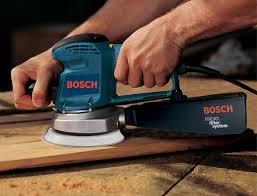When applying wood stains, the golden rule for getting the very best results is to apply a wet coat, then wipe off the excess before it dries.
It's quicker and more efficient to apply the stain with a cloth, or sponge than to use a brush, especially if you're using a fast drying wood stain on a large surface. You're also less likely to have problems with the colour application.
It's quicker and more efficient to apply the stain with a cloth, or sponge than to use a brush, especially if you're using a fast drying wood stain on a large surface. You're also less likely to have problems with the colour application.
Applying Woodstain Using A Sponge
However, it may be easier (and cleaner) using a brush to get the wood stain into tight corners. You can still use a cloth or a sponge but they must be soaked with the stain. If they're too dry it won't work!
There's nothing wrong with using a brush but stains, including water-based, lacquer and dye stains, dry too quickly to allow time to brush on and wipe off large surfaces before the stain begins to dry.
You can use virtually anything to apply the stain, including a cloth, sponge, paint pad, roller and even a spray gun. However, if you use a spray gun you'll need to clean it afterwards and this tends to be a long, laborious process.
The most important point to remember is that you must wipe off all the excess stain before it dries.
If the stain begins to dry before you can wipe it off, you'll get unsightly blotching caused by thick dry spots of stain next to still wet areas.
If you're brushing on one of the fast drying wood stains, you may also get darker lap marks that are caused by brushing more wood stain over dried stain areas.
Tip: If you find some dried patches of wood stain, quickly apply more stain to dissolve and even out the dried patches!
If the stain begins to dry before you can wipe it off, you'll get unsightly blotching caused by thick dry spots of stain next to still wet areas.
If you're brushing on one of the fast drying wood stains, you may also get darker lap marks that are caused by brushing more wood stain over dried stain areas.
Tip: If you find some dried patches of wood stain, quickly apply more stain to dissolve and even out the dried patches!
If you're applying wood stain, be sure to take the advice above, if you want to achieve a first class finish!








